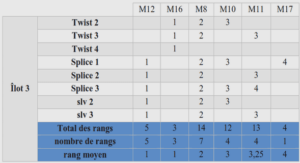TEMPORAL MODULATION AND ADAPTIVE CONTROL OF THE BEHAVIOURAL RESPONSE TO ODOURS IN RHODNIUS PROLIXUS
In nature, animals are continuously exposed to a variety of physical and chemical cues perceived by different sensory systems (olfactory, visual, etc.). Many of these cues play a relevant role in animals’ survival, helping them to find food, mates, refuges and other resources, to avoid predators, and also mediating communication with con-specifics. In particular, the detection of odours represents a crucial task for animals, provided the diversity, dispersion ability and informational value of volatile molecules. In many cases the presence of certain olfactory cues is limited to a certain time of the day. For instance, female moths release sexual pheromones at particular temporal windows every day, during which males become active (Baker and Cardé, 1979). In other cases, odours can be more or less continuously present, but the response occurs during a given daytime, as in the case of mosquitoes, which search for food when their hosts are resting (Brady and Crump, 1978). Daily rhythms of olfactory responses have been repeatedly reported at both, the sensory and the behavioural levels (see Saunders et al., 2002). In moths, for instance, numerous examples from studies on female release and male behavioural response to the pheromone indicate that the timing of this behaviour is governed by a circadian mechanism (Baker and Cardé, 1979; Cardé and Webster, 1981; Castrovillo and Cardé, 1979; Haynes and Birch, 1984; Linn et al., 1996; Rosén et al., 2003). In the cockroach, Periplaneta americana, males maintained in a light/dark cycle show a daily rhythm in responsiveness to the female sex pheromone with a peak of sensitivity during the early night hours (Hawkins and Rust, 1977; Zhukovskaya, 1995). Daily rhythms of behavioural response to different sensory stimuli have also been reported in tsetse flies. When stimulated with host-associated odours, flies show a daily bimodal pattern of responsiveness, with peaks at dawn and dusk (Brady, 1975). Furthermore, the chemoreceptors located on the antennae of Glossina morsitans and G. fuscipes seem to respond to host-related stimuli with a daily rhythm in synchrony with much of its behavioural repertoire (Van der Goes van Naters et al., 1998). In another blood- sucking insect, the bug Triatoma infestans, it has been shown that the rhythm of behavioural responsiveness to host odours is under the control of an endogenous circadian clock (Barrozo et al., 2004). Rhythms of sensory sensitivity have been also well established in Drosophila melanogaster (Krishnan et al., 1999) and in Leucophaea maderae (Page and Koelling, 2003). In both species, a general modulation of chemosensitivity has been postulated, i.e., the animal’s sensitivity does not depend on odour identity. Paradoxically, in both cases, maximal sensitivity to odours does not occur at the time during which insects are behaviourally active (i.e., when a given odour becomes biologically relevant), but during their resting periods.
These findings raise some relevant chronobiological questions about how insects, many of which exhibit different discrete activity periods (i.e., bimodal activity), modulate their responsiveness to different odours which are relevant at different moments of the day. The first question is whether or not the behavioural responsiveness to odours is modulated. Second, if so, is it maximal during just one or both activity periods? Third, if different odours are associated to different activity periods, are specific sensitivities modulated together or selectively? Finally, if modulation occurs, is it controlled by an endogenous mechanism or is it under the direct influence of exogenous mechanisms? Trying to shed some light on these questions, we analysed the chronobiological basis of the responsiveness to odours in a blood-sucking bug Rhodnius prolixus (Heteroptera: Reduviidae). Our choice lies on several biological characteristics of these insects, which make them particularly adequate for this kind of study. Triatomine insects exhibit a marked circadian organisation of many activities, e.g. locomotor activity, egg hatching, ecdysis, oviposition, thermopreference, visual sensitivity (Ampleford and Steel, 1982; Constantinou, 1984; Lazzari, 1991, 1992; Minoli and Lazzari, 2003; Reisenman et al., 1998, 2002). These different physiological and behavioural processes take place at either one or two temporal windows, one at the beginning and the other at the end of the scotophase. They exhibit a maximal motivation to feed at dusk (Lorenzo and Lazzari, 1998), and during this time they left their shelters and seek for a blood meal guided by carbon dioxide, a main olfactory cue in host searching (Barrozo et al., 2004). At dawn, the bugs return to their shelters using the aggregation pheromone present in their excrements as chemical landmarks to guide them back to refuges (Lorenzo Figueiras et al., 1994). For this, they deposit faecal drops at the entrance of their shelters (Lorenzo and Lazzari, 1996).



